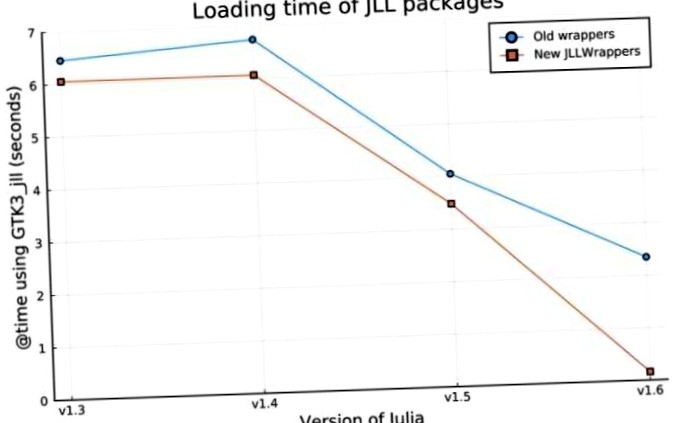Programming language: julia 1.6 is an lts version and practiced parallel

The programming language julia is in version 1.6 released. The current release should receive long-term support (LTS), and the developer team has undergone the environment for meticulous tests. A number of new features is on board, as a highlight, the parallel compilation, eliminating unnecessary recompilation and the reduction of compiler latencies, especially through new tools for compiler introspection and types inference.
Since the exports of all instructions of a module may include a lot of code, julia’s standard practiced caches produces the modules to reduce the compilation time. The compilation package in the current release should further accelerate this process by parallelizing. According to the publishers, the particularly in complex mathematical calculations lead to significantly faster charging times.
Make more selective
Julia is known for the expandability of new methods and predefined functions, which sometimes requires recompilation: obsolete code is marked as disabled, and the entire program code is then again processed with the extended settings. For alteren versions of the programming language, this has led to delays, since sometimes a tenth of the code in the first step was to be distinguished as undulptile. Version 1.6, according to envision, has a "elegant" scheme for disengaging old code and should complete the process faster.
Reduced latencies when compiling
The methods of compiling have been sorted by julia so far after their sequence. With julia 1.6 becomes this process "lazy", so demand-oriented. The julia developers have adapted the algorithm to selectively select suitable methods, instead of printing them in chronological ranking. Also with a view of latencies julia 1 has.6 new tools for compiler trousing on board, which should keep in mind especially the type inference.
Developers can now be apparently with version 2.2 with julia compatible tool snoopcompile.JL implementation options proof and show in advance, what impact had the implementation of certain packages on the compilation time. More information is the snoopcompile.Remove JL documentation.
Similar internal data structures
The julia team also waved to the internal data structures: the functionality of the code should not otherwise increase performance, on the other hand. For example, invokeless test should now be faster than try and watch the dynamic dispatch. In addition, some complex data structures that were previously heard in baume have become simple hash tables in the current release, which make it easier for scalability and make it easy thread safe. In particular, typesal coatings such as apply_type and tuple, the lookup of methods over methodinstance and dispatch with jl_apply_generic love themselves in this way.
Changes when loading binaries
Who develops with julia, usually uses libraries over the so-called JLL packages, which deal with the framework binarybuilder.Create JL by cross-compiling. With a standardized API, julia packages get access to the binaries so provided. While this type of deployment is considered extremely reliable and portable, her hook has been the long loading time. To make a remedy, the developer team has introduced a new package form in the current release: jllwrappers.JL contains macros that automatically create the necessary bindings for a JLL package and claim little functions and data structures possible.
The centralized jllwrappers.JL have triggered well in the test phase in comparison with the old wrappers and can evidently reach a clear (according to quantities up to five times) acceleration at the loading times grober binaries.

Charging times of JLL packages: old and new wrapper in comparison
Further changes and further information
Further changes concern the formatting of stacktrace, which now shows argument names, and the team has their own information "technical debt mined", around julia 1.6 for continous integration (CI) to trim. For this purpose, a series of small-scale problem cases were fally, which the developer team partly had long on the to-do list. Details can be found in the exemplary blog entry of the julia developer. A complete list of innovations is available on github.